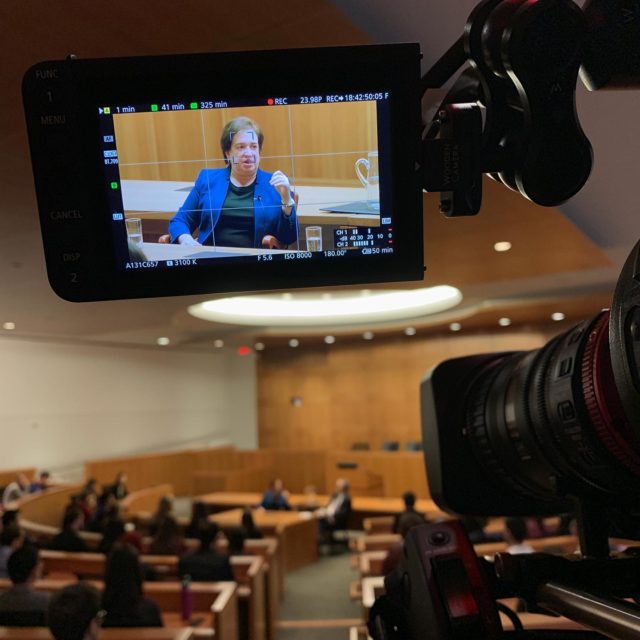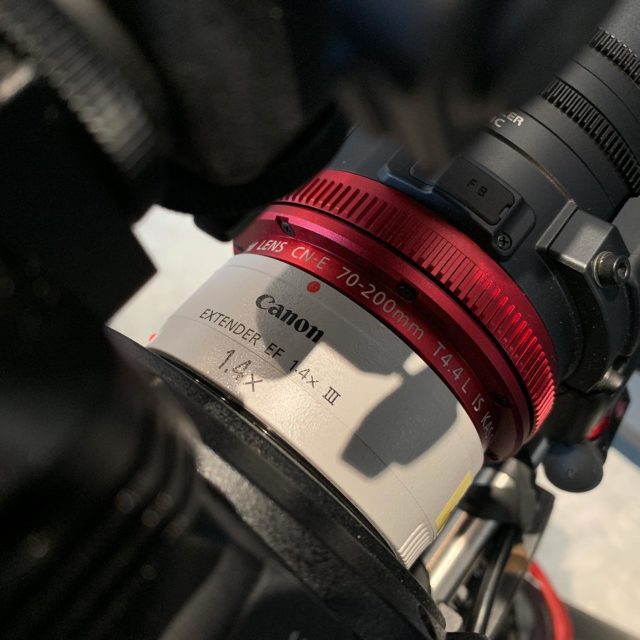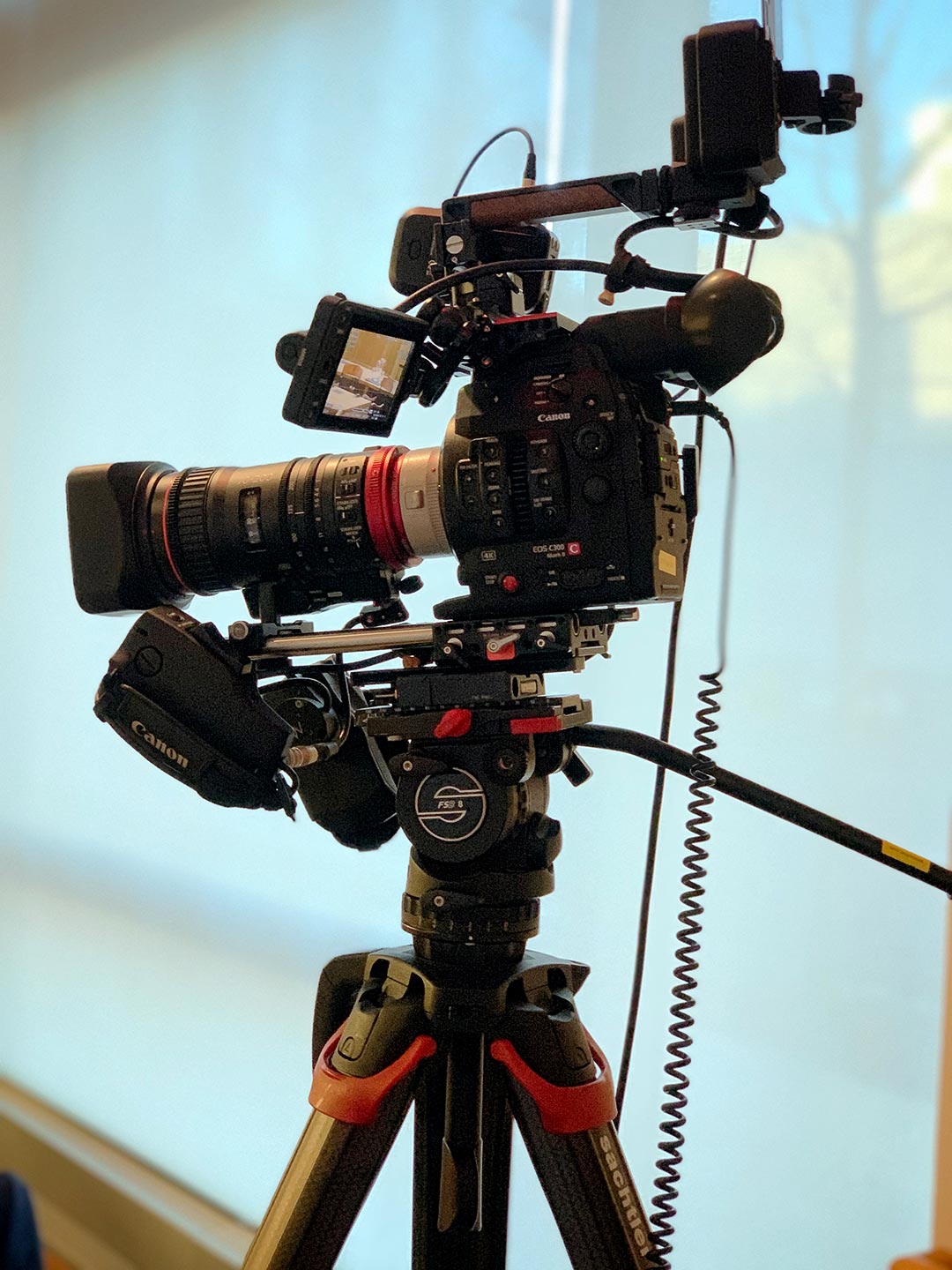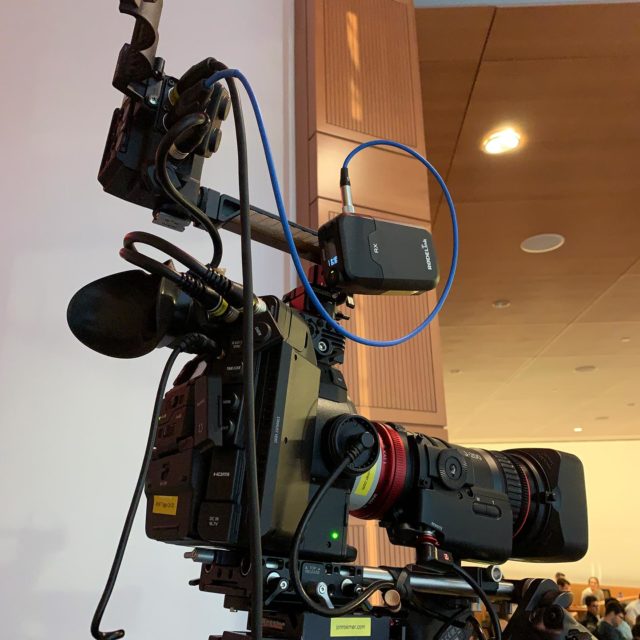Supreme Court Associate Justice Elena Kagan in conversation with Fordham Law School students on reviewing statutes. The first in a series for Fordham Law School and currently appearing in the online version of Fordham Lawyer Magazine.
SCOTUS Associate Justice Elena Kagan on Reviewing Statutes on Vimeo and YouTube.
Production

This project was relatively simple in terms of production. I was limited to one camera which had to be in the back of the room. I had to use available light and I would not be able to mic Kagan but I would be able to tie into the house audio via XLR. All good but in order to bring this about a few decisions needed to be made.
The camera was a no brainer. I would use my Canon C300 Mark II with its ability to film continuously, its XLR inputs for audio, its 4K (adding the option of punching-in in post), and its excellent image quality.

Camera determined, the bigger question was lensing. I needed enough reach to ensure that I could get a waist up shot of the seated justice, I needed a zoom to also be able to get a two-shot at times of Kagan with the moderator, I needed enough speed to make do with the room’s lighting, and I needed the ability to finesse the focal length in a smooth manner while filming. I do own a 70-200mm f/2.8L II lens and while that lens offers speed it does not zoom smoothly when it’s used for video.
I considered renting a Canon 100-400mm f/4.5-5.6L II lens. It’s a great lens, I used to own one, and it would be an obvious choice for its reach but it was not an option to rent it given the short lead time on the project. It also, like the 70-200mm, is a stills lens so it is not the smoothest of operators when it comes to video and as you’ll see below it offered no real advantage on speed.
So, using my Canon CN-E 70-200mm T4.4L Compact Servo Zoom lens with my Canon Extender EF 1.4x III made the most sense. It solved a couple of immediate needs: it increased my reach from 70-200mm to 98-280mm and it gave me professional quality zoom capability via the lens’ rocker control. This meant I could zoom smoothly while filming and with a one-camera setup on this type of project that’s a value-added proposition. There would be no ability to cut between two cameras in the edit.

What about the effective aperture? When you use the Extender EF 1.4x III you lose one stop of light and when used in combination with the CN-E 70-200mm my widest effective aperture would be f/5.6. Would that work? The short answer is, yes.
Had I shot with my 70-200mm f/2.8 II lens I would have still needed the extender and I would have had an effective aperture of f/4. A stop faster but the lens still would have had all of the constraints of using a stills lens. Had I been able to rent the 100-400mm f/4.5-5.6 zoom lens I would not have needed the extender, that’s a plus, but I still would have been sitting around f/5.0-f/5.6 if I was filming in the latter two-thirds of the zoom range. So, in practical terms there was no speed advantage to the 100-400mm over the CN-E 70-200mm and the 100-400mm’s operation while filming, just like with the 70-200mm f/2.8 II, is hampered by its design.
I did need to film at ISO 8000 to make the f/5.6 work but the C300 Mark II in Clog3 can more than handle it. A little denoising of the shadows with Neat Video’s plug-in for FCPX and the files were good to go.

Audio on these smaller projects is always nerve wracking. You can’t always mic the subject, you have to rely on the house feed if there is one, and you are on your own trying to keep image and audio running. What I have learned is to always have a back up. Always, always, always. On this project, the house feed sent hardwired audio from both the justice and the moderator into the camera via XLR. While that should have covered the audio there was a potential issue on site. The room where the Q&A was held was a formal moot court room with an amphitheater design. Every desk was outfitted with a microphone that should have allowed the user to switch the mics on and off at will but a couple of them were locked on. They could neither be turned off nor physically disconnected. If the students at those desks moved, shuffled papers, coughed, etc. they would be heard loud and clear on both the feed and over the room’s PA.
So, as a backup I taped a wireless lav mic to the edge of the desk closest to Kagan with the transmitter hidden under the desk. This gave me a secondary audio feed into the camera. It wouldn’t be perfect but it was there if I needed it. I also spoke with the students at the hot mic desks to let them know that their mics would be live the entire time.
In the end it all worked out, I was able to use the house feed in the selected clips for the series but I can’t emphasize enough. Always, always, always have an audio backup.
